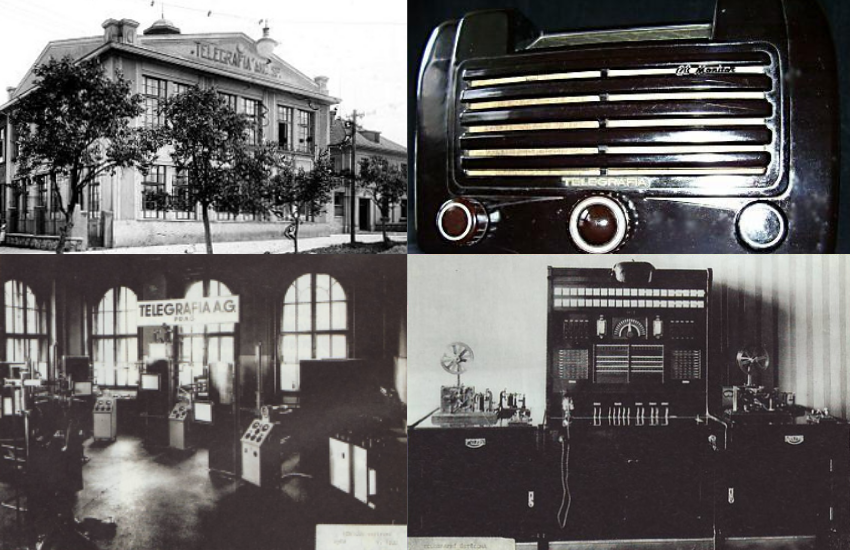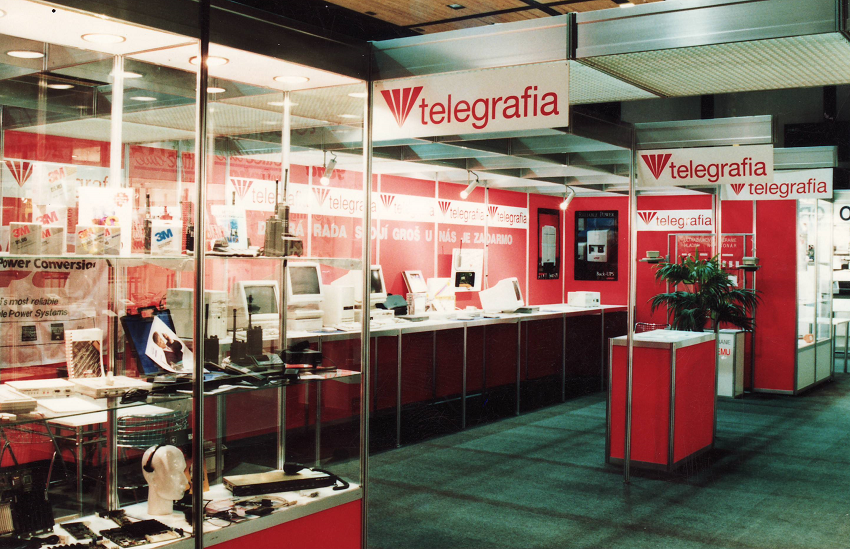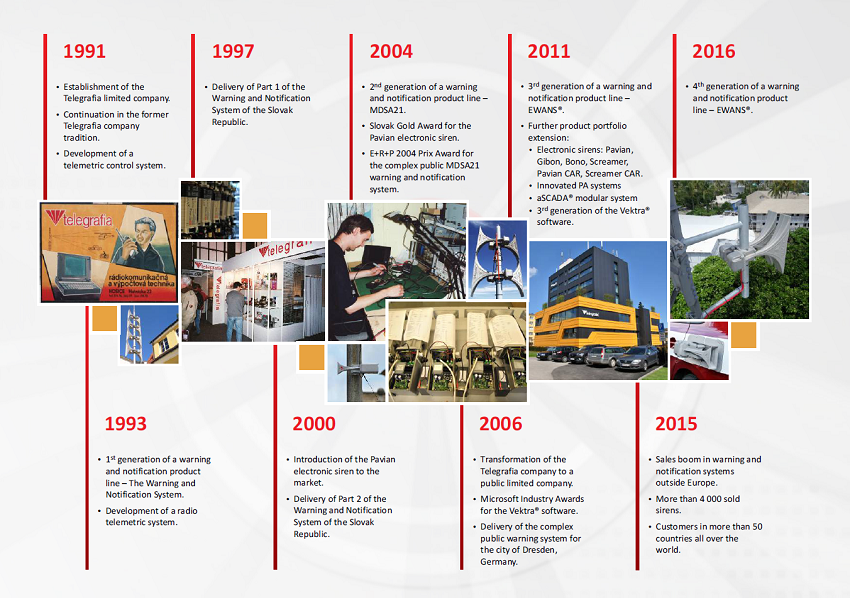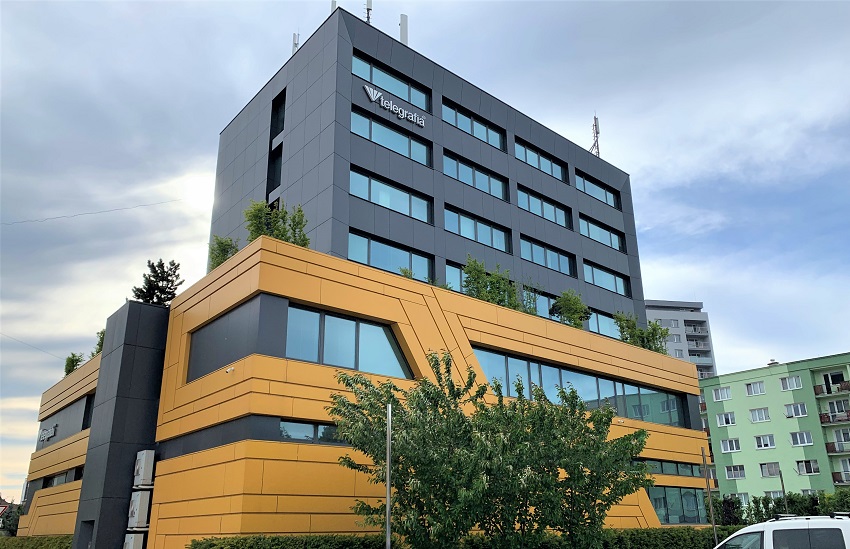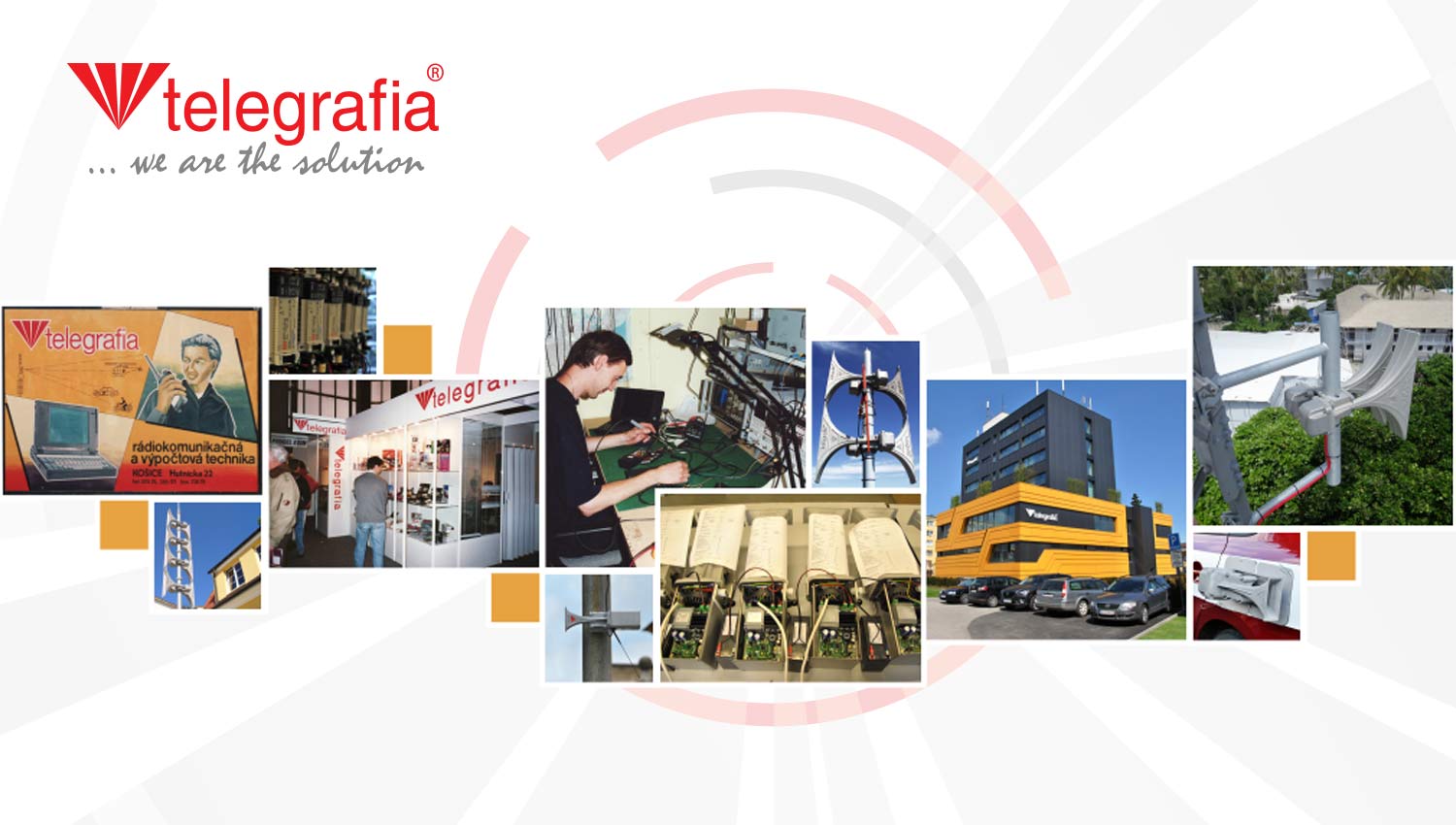
From Nikola To Peter – History of Telegrafia
The fourth decade
More than 30 years of operation. This year has marked the fourth chapter in Telegrafia’s story. Perhaps, it is better to say its fourth stage. The beginning of the fourth decade of the modern existence of the company under this name represents the next stage of its life, constant progress, improvement, and global expansion. What will it be like? We are about to write that chapter, so it is too early to say. What has it been like? Let us have a look at the previous three chapters now.
The roots of our company date back to as early as 1919 – long before it bore the name of one of the most respected physicists, a Serbian inventor and designer, Nikola Tesla. First things first, then.
The beginnings
The original Telegrafia company was established on October 18, 1919. Its exact name was “Telegrafia, a Czechoslovak factory for telephones and telegraphs, plc.”. The production was focused on the development and production of low-current electrical devices. The company manufactured telephones and telecommunications devices. It was founded as a public limited company and owned mainly by the Czechoslovak state. Its production hall, or let us say a small factory, which started with only nine employees, was in the Czech village of Roztoky near Prague. As the production capacities had become insufficient for Telegrafia, similarly orientated companies such as Jevan and Automat joined in. Due to the dramatically escalating demand, the company’s headquarters eventually moved to Pardubice, where the company managed to acquire larger premises.
The beginning of the second oldest regular radio broadcasting in Europe by Radiojournal in 1923 meant a vast boom to which Telegrafia responded by launching the new production of crystal radios, which happened in 1924. The company’s rise was also associated with the production of automatic telephones from the mid-1930s to the end of World War II. However, the company’s growth did not last forever and was ended by the economic crisis. This, together with declining sales and ongoing lawsuits with licensors, caused the closure of the Telektry plant in Pardubice in 1933, where radios were manufactured. The company survived the crisis mainly due to government procurement and interest in telecommunications technologies and partly due to military production.
The war
The German occupation had considerably changed Telegrafia. All production was subordinated to the military. Nevertheless, every cloud has a silver lining, and the truth was it had helped the company and opened an excellent opportunity for technological advancement and production material development. The production of components for radar systems in cooperation with German manufacturers was paramount. Home radios and other electrical appliances were also manufactured during the war.
Tesla
The Telegrafia Company was nationalized even before the establishment of the communist regime in Czechoslovakia. The main reason was its strategic character and military orientation. The last radio made by Telegrafia was the Liberator. After World War II, precisely on December 31, 1945, the original Telegrafia was formally dissolved and became part of a large national enterprise called Tesla Pardubice. During the communist era, the company developed and, in addition to high-quality consumer electronics, predominantly produced military products, including the world-famous Tamara passive radars. Still, being part of the Tesla concern, Telegrafia was able to allocate a small portion of its resources to engineering projects, such as one of the first television broadcasting projects in the region. After the fall of the communist regime, the company split into several smaller entities.
The modern era of Telegrafia
In 1991, after the collapse of communism, the newly established Telegrafia company entered a whole new era of continued development. Following in the traditions of its Pardubice predecessor, it was one of the first companies in post-communist Czechoslovakia that started selling modern computers. However, its principal activities revolved around the development and installation of radio communications technologies. The design of these was soon supplemented with early warning devices and the company’s own external electronic sirens. Nowadays, the company is the undisputed global leader in its field.
Four generations of electronic sirens. Today’s Telegrafia is a woman of the world – a charming lady that has been through many years of experience. Even though the detailed account of all events that have shaped its history would be too long and would deserve a lot more space, let us mention at least some of the imaginary milestones over the three decades of the company’s existence.
1991 – Establishment of the Telegrafia limited company, a successor to the former Telegrafia’s company tradition. The development of a telemetric control system.
1993 – 1st generation of a warning and notification system. The design of a radio telemetric system.
1997 – Delivery of Part 1 of the Early Warning and Notification System of the Slovak Republic.
2000 – Introduction of the Pavian electronic siren to the market. Delivery of Part 2 of the Early Warning and Notification System of the Slovak Republic.
2004 – 2nd generation of a warning and notification system – MDSA21. The Slovak Gold Award for the Pavian electronic siren. E+R+P 2004 Prix Award for MDSA21 – the complex public warning and notification system.
2006 – Transformation of the Telegrafia company to a public limited company. Microsoft Industry Awards for the VEKTRA® software. Delivery of the complex public warning system for the city of Dresden, Germany.
2011 – 3rd generation of a warning and notification system – EWANS®. Further product portfolio extension by the stationary Pavian, Gibon, Bono, and Screamer and mobile Pavian Car and Screamer Car electronic sirens. Innovations of PA systems. The development of the aSCADA® modular system. The 3rd generation of the VEKTRA® software.
2015 – Booming sales of warning and notification systems outside Europe, with more than 4,000 sirens sold worldwide. Customers in more than 50 countries all over the world.
2016 – 4th generation of a warning and notification system – EWANS®.
2019 – Production of the 4th generation Pavian electronic siren. The Diamonds of the Slovak Business Award 2019
2020 – Products in over 80 countries all over the world.
From the production of radios and telephones through military radar components to warning systems as one of the Diamonds of the Slovak Business. We have briefly recollected the history of the company. And what will the future hold? It is history in the making!

The article was written by
Róbert Jakab
Robert is like moving photography – because he is a video. He is able to capture 60 frames per second, so when something happens, he records it. He is also works on smaller videos to make an evening movie…and then continuing the second part. Telegrafia 2: Monkey power

